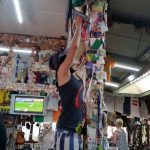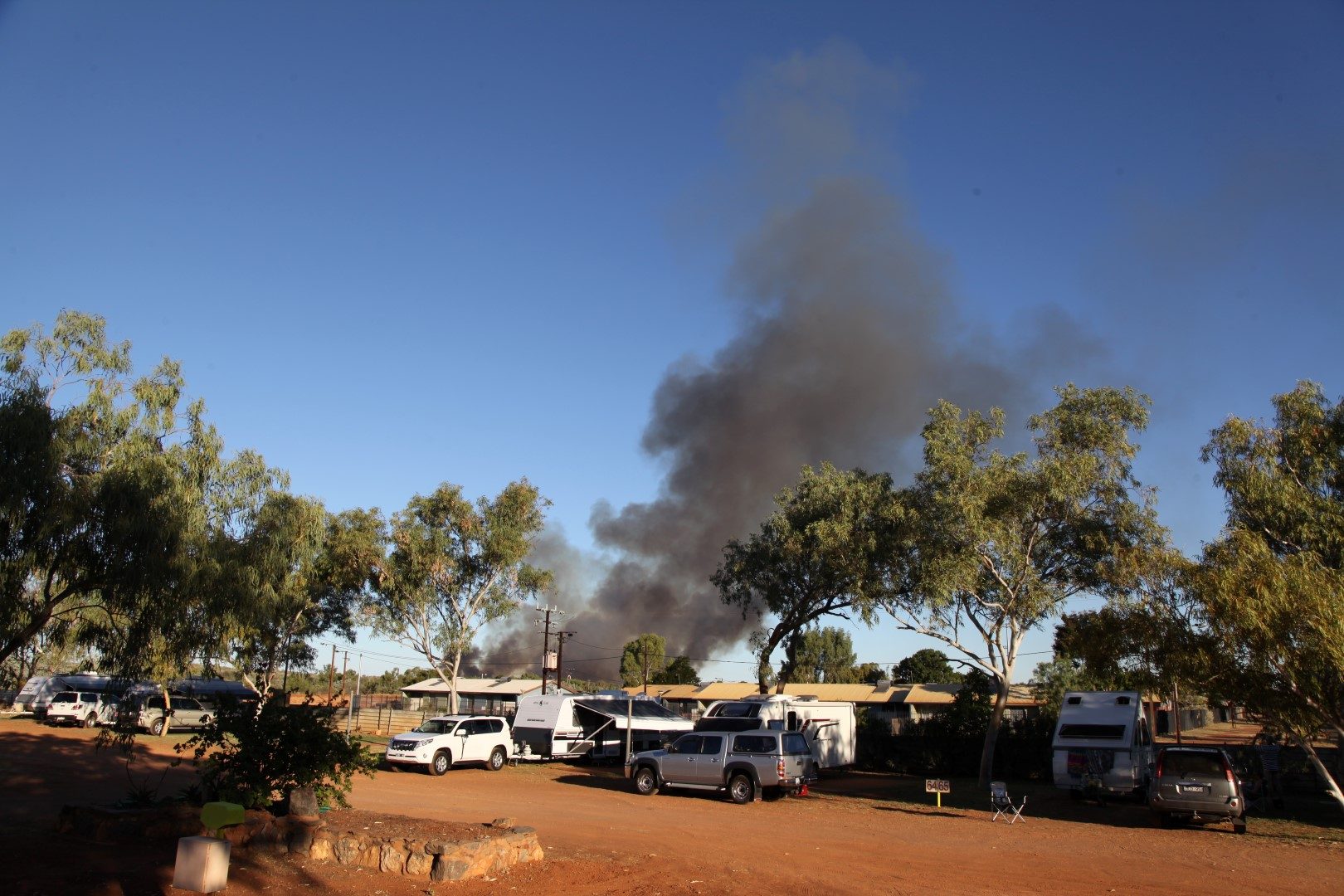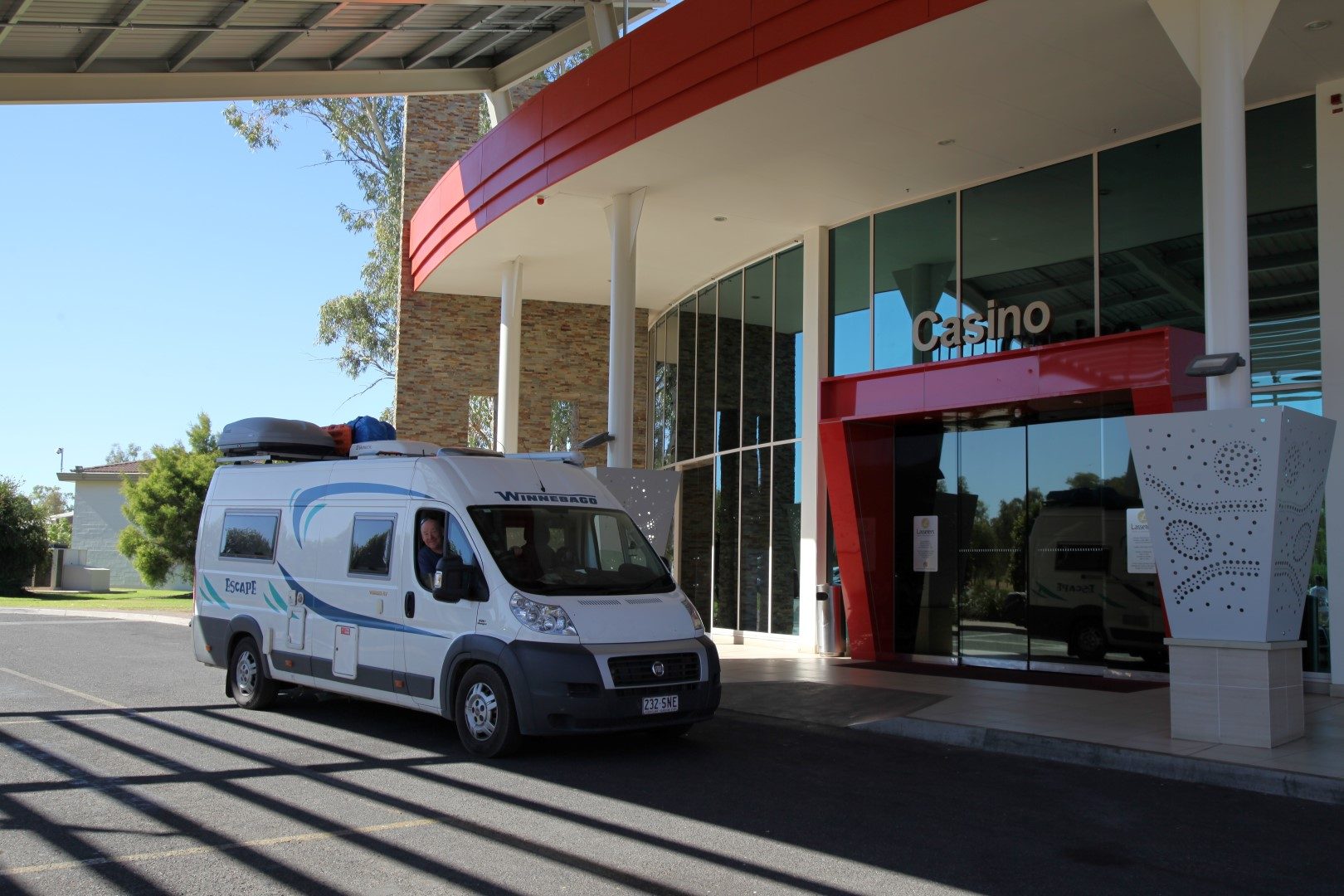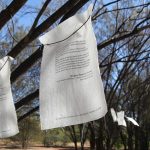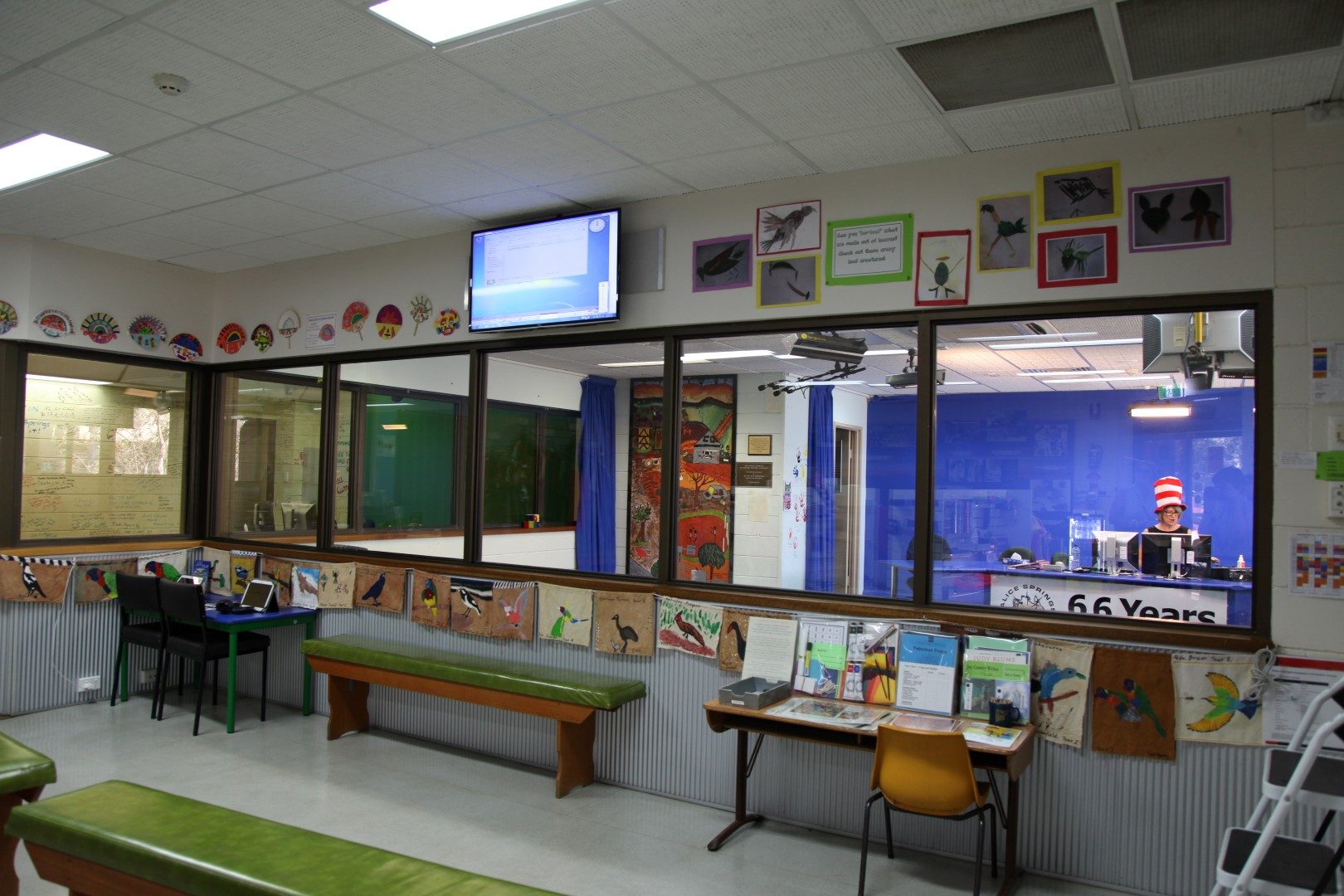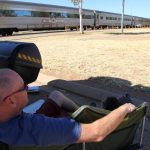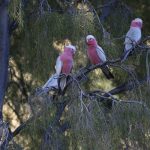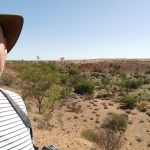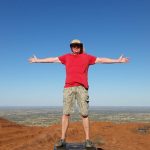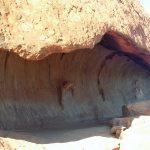Daly Waters Pub
A real surprise on the highway. The pub must be making thousands of dollars every night from drinks, pub meals and the campsite. Mostly grey nomads there and the pub knows how to entertain them for the night with a beef and barra bbq and live Aussie country music singalongs. It was nice to sit in comfy chairs with a cold beer at the end of a long hot day though.
Travellers have left all sorts of things hanging around the pub such as hats, thongs and underwear.
Bitter Springs, Mataranka
Bitter Springs is in the Elsey National Park. It’s a thermal pool where the water rises from underground at a fairly constant 34 degrees C. Dogs not allowed of course but the pool is only a short walk from the campsite where we’re staying. Reception hires out noodles and masks and snorkels. It was a lovely refreshing swim in this dust and 30 degree heat.
Jonathan went off fishing in the nearby river but after spotting this freshie lurking in the water, he decided an afternoon lounging in the hammock was much safer. 
We’re now only 110 km South of Katherine and 424 km South of Darwin.



